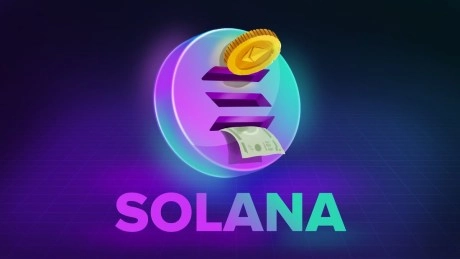- Homepage
- >
- News
- >
- Business
- >
- Ethereum is a mess, and it’s going to get much worse
Since its inception in July 2015, Ethereum has undergone several massive changes in direction.
From the world computer to a modular blockchain, then switching from proof-of-work (PoW) to proof-of-stake (PoS), and abandoning on-chain scaling to embracing a patchwork quilt of layer two solutions, Vitalik Buterin’s brainchild has struggled to define itself and stick to one vision for long.
Just months from its 10th anniversary, it’s time to admit Ethereum has failed to live up to its potential. A decade into the experiment, projects either leave altogether or create their own chains and scaling solutions.
Giving up on layer-one scaling was a fatal mistake
Even in the early days, some large projects moved away from Ethereum. Tron was a memorable example, but the pace of projects migrating away has only picked up since then.
Enjin sunsetted Ethereum services in December 2023, moving 200 million NFTs to its blockchain. Uniswap has integrated with a dozen blockchains, Polymarket has integrated with Polygon, and now ENS is creating a layer two solution.
While these projects differ, they share one thing in common: frustration with Ethereum’s fluctuating fees and inability to scale. This affects everything from business planning to user experience, making it impossible to build a long-term future.
The drawbacks of layer two solutions for scaling
Bitcoin’s inventor, Satoshi Nakamoto, knew the futility of building on shifting foundations. He told us, “The nature of Bitcoin is such that once version 0.1 was released, the core design was set in stone for the rest of its lifetime.”
He also told us that Bitcoin could scale infinitely with no ceiling as he designed it. “The existing Visa credit card network processes about 15 million Internet purchases per day worldwide. Bitcoin can already scale much larger than that with existing hardware for a fraction of the cost. It never really hits a scale ceiling,” he told developer Mike Hearn in a private email shortly after its release.
Layer two solutions have done BTC no favors, and Ethereum’s embrace of them may well turn out to be a fatal mistake. Using L2s and side chains helps to scale in the short term, but there are multiple drawbacks and negative tradeoffs.
Liquidity fragmentation is one of the most apparent negatives. Liquidity is hugely important for a blockchain that hopes to underpin the world financial system and power DeFi. When pools are split across multiple layers, market makers have to allocate resources to them all, and traders have to switch between them.
This also negatively impacts network effects. Looking back at the exponential growth of Web 2.0 platforms like Facebook (NASDAQ: META) or Twitter, we can see how significant these effects were. Having applications split across different layers dampens network effects and viral growth.
In today’s world, regulatory compliance is critical. While crypto-anarchists may believe the industry is above the law, the last few years have shown otherwise. Many layers and side chains increase regulatory risk and jurisdictional complexity for builders.
Different layers with bridges to, from, and between them also introduce unnecessary security risks. Anyone in the industry for more than a few years will be well aware of the notorious bridge hacks (e.g., the Ronin hack). Other risks include replay attacks, fraudulent state updates, smart contract bugs, and dozens of others.
Any marketer worth their salt will tell you that user experience is crucial to gaining widespread adoption of any technology. Even those who have used digital currencies for years struggle to navigate the ever-growing labyrinth Ethereum has become.
Lastly, layer two solutions don’t scale Ethereum—they are merely an illusion. In the end, transactions have to settle on the base layer, and it’s still congested with unpredictable fees. Climbing a ladder on a sinking ship doesn’t change the fact the ship is sinking, and in the end, you’ll still have to climb back down and swim through the flood.
As Satoshi told us, scaling Bitcoin was always the way. Thankfully, some haven’t given up, and at a million transactions per second and growing, the BSV blockchain is alive and well. It never hits a scaling ceiling, and BSV developers are proving it!
How did Ethereum get here?
To understand how Ethereum became such an unfixable mess, it helps to understand its history.
It all began when Vitalik Buterin, who was the Founder of Bitcoin Magazine, was pushed away by BTC Core developers. He wanted to build Ethereum on top of the Bitcoin blockchain, but the dictators at BTC Core had already seized control, and he was told he could not. Besides, they had already disabled many of the necessary op_codes.
After this, the 19-year-old computer science student realized he would need to create his own blockchain. Of course, being a mere teenager with one year of computer science behind him, he didn’t foresee all of the problems Satoshi Nakamoto had meticulously worked out over decades, and he naively believed he knew better.
Despite his youth and relative inexperience, Buterin maintained strict control over his brainchild. This would become apparent over the years when, at his sole discretion, the Ethereum blockchain was rolled back and when it migrated to proof-of-stake. Both changes technically forked Ethereum, making this iteration a fork of a fork and making Ethereum Classic the original.
Yet, Buterin’s inability to pick a direction and stick with it isn’t the only reason Ethereum is in its current state. His commitment to off-chain scaling, much like the BTC camp initially shunned him, has led Ethereum through half a dozen failed attempts to scale. The most infamous example is Plasma, which quickly fell flat. Incidentally, the Plasma whitepaper was co-authored by Joseph Poon, who also co-authored the Lightning Network whitepaper.
In short, Ethereum’s decade-long history of chopping and changing, failing repeatedly, and convincing rubes of a new narrative every bull cycle is down to Vitalik Buterin’s peculiar personality and his inability to lead effectively. Ethereum is his project, and so its current state is squarely on his shoulders.
The original Bitcoin protocol is alive and well
While Buterin likes to mock BSV, the original Bitcoin protocol, it can never be said that it has changed direction, veered off course, or implemented half a dozen failed scaling attempts. BSV developers have stuck to their guns, pushed forward despite relentless criticism, and worked tirelessly to make Satoshi’s vision a reality.
Despite some delays in deploying in the past few years, BSV’s scaling model is working. As Teranode scales to one million transactions per second and beyond on-chain, it will prove that Saotshi Nakamoto was right and Vitalik Buterin was wrong.
Watch: Bringing the Metanet to life with Teranode
title="YouTube video player" frameborder="0" allow="accelerometer; autoplay; clipboard-write; encrypted-media; gyroscope; picture-in-picture; web-share" referrerpolicy="strict-origin-when-cross-origin" allowfullscreen="">



